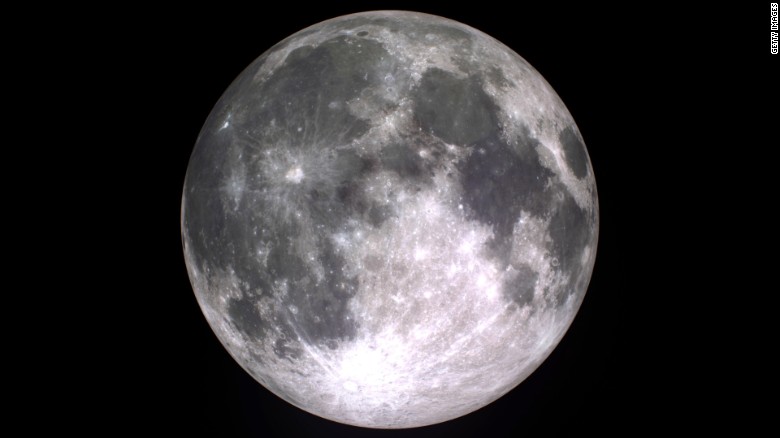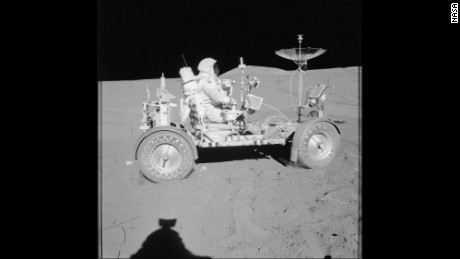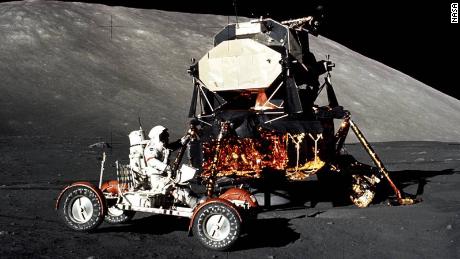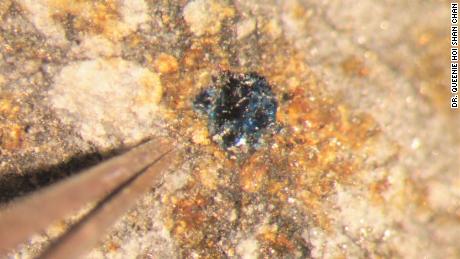Story highlights
- A new analysis suggests that there are two windows in the moon's past when it might have been habitable
- Though there is no direct evidence for life yet, future missions might uncover it
(CNN)Although the moon might look desolate and pock-marked with impact craters today, new research suggests that it may have once supported life.
A study published Monday in the journal Astrobiology cites two time periods during the moon's distant past when conditions on the surface were potentially habitable.
Shortly after the moon was forming from a debris disk 4 billion years ago, it was releasing water vapor and other volatile gases in mass quantities. The second event happened about 3.5 billion years ago, when volcanic activity on the moon reached a peak.
On both occasions, the release of these volatile gases would have created liquid water pools on the surface, as well as a dense atmosphere that could stay in place for millions of years. It most likely had a magnetic field as well that could have protected any life on the surface from solar wind, a deadly flow of charged particles streaming out of the sun.
Today, the moon doesn't have an atmosphere but a very thin layer of gases, including sodium and potassium, that try to act like an atmosphere.
"It looks very much like the moon was habitable at this time" billions of years ago, study author Dirk Schulze-Makuch, an astrobiologist at Washington State University, said in a statement. "There could have actually been microbes thriving in water pools on the Moon until the surface became dry and dead."
The new study relies on data from space missions and analysis of rock and soil samples from the moon. In recent years, studies have suggested that there is more water ice on the moon than previously believed and that water could exist beneath the surface.
But what would life have looked like if it existed on the moon, and how did it originate?
On Earth, the earliest evidence of life can be traced to cyanobacteria fossils between 3.5 billion and 3.8 billion years old. Cyanobacteria are microscopic single-celled organisms that produce oxygen through photosynthesis.
The ingredients for life have been found in meteorites before, and it is believed that meteorites could have helped bring water to Earth in the early time of its formation. The researchers for this study propose that in the early days of our solar system, it's possible that meteorites that came in contact with Earth and "blasted off its surface" could have also landed on the moon.
This was common in the early solar system, when giant impacts and the transfer of meteorites between planets occurred, according to the study.
If so, the meteorites could have carried microbes to the moon, and those microbes could have lived in pools of water on the surface.
"If liquid water and a significant atmosphere were present on the early Moon for long periods of time, we think the lunar surface would have been at least transiently habitable," Schulze-Makuch said in a statement.
Now, the moon is essentially dead and dry, its surface covered with dust. But if future missions revisit the moon, the researchers believe that retrieving samples from areas dating back to the peak of volcanic activity could provide evidence of water or life.
Experiments simulating the conditions on the moon 3 billion to 4 billion years ago could also be carried out in labs on Earth or the International Space Station to see whether microbes could survive, according to the study.









